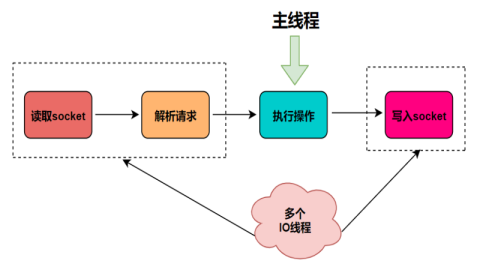转载声明:原文链接:https://blog.csdn.net/weixin_42296161/article/details/126547323
前言
在面试题中经常会出现与“发布订阅”模式相关的题目,比如考察我们对Vue响应式的理解,也会有题目直接考验我们对“发布订阅”模式或者观察者模式的理解,甚至还会有一些手写算法题。笔者就在今年三月参加某安全公司的面试时被要求手写代码实现“发布订阅”模式,当时由于没有准备没有回答上来,悔不该当初。由此可见“发布订阅”模式是一个非常重要的设计模式,接下来我们一起学习下吧。
观察者模式 vs “发布订阅”模式
首先需要澄清的事,这两者虽然相似,却有不同。
观察者模式
只涉及两个关键角色,发布者与订阅者。观察者模式定义了一种一对多的依赖关系,让多个观察者对象同时监听某一个目标对象,当这个目标对象的状态发生变化时,会通知所有观察者对象,使它们能够自动更新。
发布者的行为:
增加订阅者
移除订阅者
通知所有订阅者
代码实现如下:
// 定义发布者类
class Publisher {
constructor() {
// 创建订阅者
this.observers = []
}
// 增加订阅者
add(observer) {
this.observers.push(observer)
}
// 移除订阅者
remove(observer) {
this.observers.map((item, i) => {
if (item === observer) {
this.observers.splice(i, 1)
}
})
}
// 通知所有订阅者
notify() {
this.observers.map((observer) => {
observer.update(this)
})
}
}订阅者行为:
被通知
去执行
代码实现:
// 定义订阅者类
class Observer {
constructor() {
console.log('创建订阅者')
}
update() {
console.log('订阅者更新')
}
}“发布订阅”模式
与观察者模式类似,但是在这种模式下发布者完全不用感知订阅者,不用关心它怎么实现回调方法,事件的注册和触发都发生在独立于双方的第三方平台(事件总线)上。发布-订阅模式下,实现了完全地解耦。
vue2.x响应式原理探究
响应式实现过程官方解释
在Vue data中存入对象数据
Vue遍历此对象每个property,通过Object.defineProperty()方法进行数据劫持,给每一个property加上getter/setter
每个组件实例都对应一个Watcher实例,会收集所有接触过的property依赖,如果数据有变化,将会收到通知,watcher会使其关联的组件实例改变
发布订阅模式在vue响应式原理中的具体运用
初始化过程
class Vue {
constructor(options) {
this.$options = options;
this.$data = options.data;
// 对data选项做响应式处理
observe(this.$data);
// 代理data到vm上
proxy(this);
// 执行编译
new Compile(options.el, this);
}
}发布者/伪订阅者:Observe
observe在前文中代表了订阅者,但这里他更多的是一个发布者,执行了发布者的权利,增加了订阅者,并且在改变时通知了订阅者。
function observe(obj) {
if (typeof obj !== "object" || obj == null) {
return;
}
new Observer(obj);
}
class Observer {
constructor(value) {
this.value = value;
Object.keys(value).forEach((key) => {
defineReactive(value, key, value[key]);
});
}
}defineReactive是一个非常重要的方法,为每⼀个key创建⼀个Dep实例
function defineReactive(obj, key, val) {
// 递归遍历 确保深层次key也能够响应
this.observe(val);
// 对每个key都建立一个Dep管家
const dep = new Dep();
// 使用defineProperty对每个key建立getter/setter
Object.defineProperty(obj, key, {
get() {
Dep.target && dep.addDep(Dep.target);// Dep.target也就是Watcher实例
return val;
},
// 监听变化
set(newVal) {
if (newVal === val) return;
// 通知dep执行更新方法
dep.notify();
},
});
}事件中心:Dep管家,管理真实订阅者Wacther
Dep收集了组件实例中同一个key对应的所有订阅者Wacther
// 发布者
class Dep {
constructor() {
this.deps = []; // 依赖管理
}
addDep(dep) {
this.deps.push(dep);
}
notify() {
// 实际上是调用的watcher中的更新事件
this.deps.forEach((dep) => dep.update());
}
}实际的订阅者:Watcher
通过触发get,将watcher添加到key对应的Dep中
// 订阅者 负责更新视图
class Watcher {
constructor(vm, key, updater) {
this.vm = vm
this.key = key
this.updaterFn = updater
// 创建实例时,把当前实例指定到Dep.target静态属性上
Dep.target = this
// 读一下key,触发get 便将watcher添加到key对应的Dep中
vm[key]
// 置空
Dep.target = null
}
// 未来执行dom更新函数,由dep调用的
update() {
this.updaterFn.call(this.vm, this.vm[this.key])
}
}VUE2.X响应式的局限性
由于js的限制,Vue 不能检测数组和对象的变化。尽管如此我们还是有一些办法来回避这些限制并保证它们的响应性。
对象
Vue 无法检测 property 的添加或移除,因为Vue 会在初始化实例时对 property 执行 getter/setter 转化,所以只有在初始化实例时就存在于data的property才是响应式的。
对于已经创建的实例,Vue 不允许动态添加根级别的响应式 property。但是,可以使用 Vue.set(object, propertyName, value) 方法或者其别名vm.$set向嵌套对象添加响应式 property。例如:
Vue.set(vm.someObject, 'b', 2)
this.$set(this.someObject,'b',2)为已有对象赋值多个新 property,需用原对象与要混合进去的对象的 property 一起创建一个新的对象。
// 代替 `Object.assign(this.someObject, { a: 1, b: 2 })`
this.someObject = Object.assign({}, this.someObject, { a: 1, b: 2 })数组
Vue 不能检测以下数组的变动:
当你利用索引直接设置一个数组项时,例如:vm.items[indexOfItem] = newValue
当你修改数组的长度时,例如:vm.items.length = newLength
为了解决第一类问题,以下两种方式都可以实现和 vm.items[indexOfItem] = newValue 相同的效果,同时也将在响应式系统内触发状态更新:
// Vue.set
Vue.set(vm.items, indexOfItem, newValue)// Array.prototype.splice
vm.items.splice(indexOfItem, 1, newValue)你也可以使用 vm.$set 实例方法,该方法是全局方法 Vue.set 的一个别名:
vm.$set(vm.items, indexOfItem, newValue)为了解决第二类问题,你可以使用 splice:
vm.items.splice(newLength)





帖子还没人回复快来抢沙发